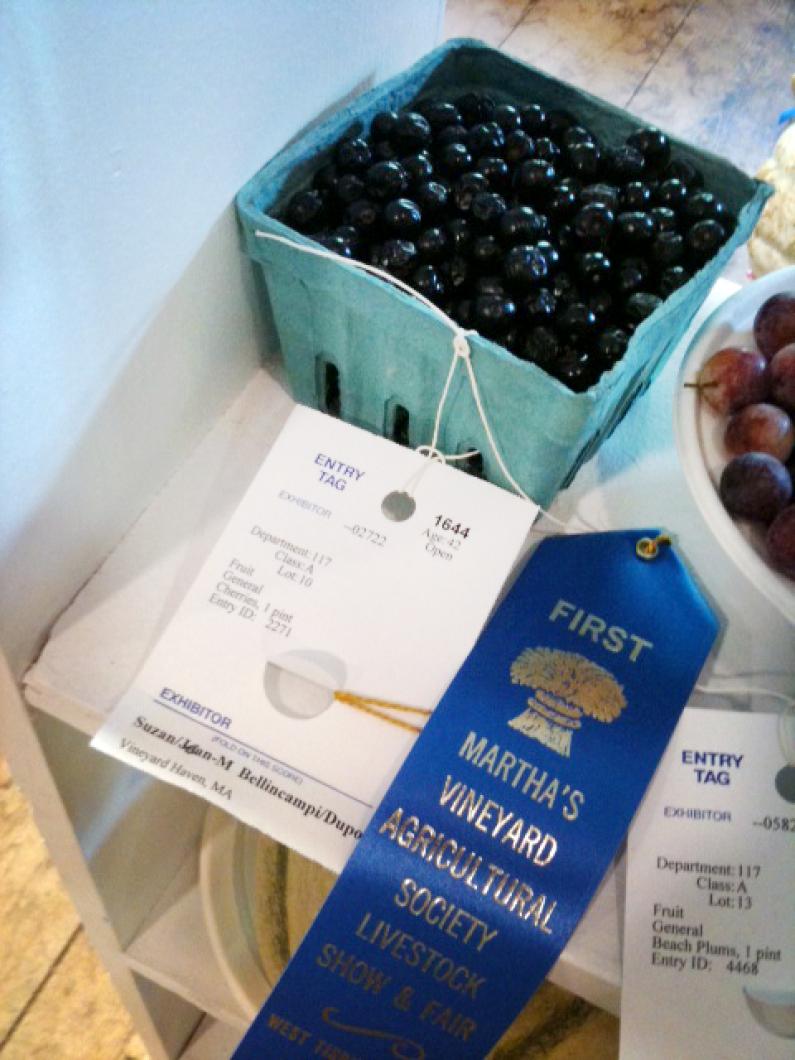It’s late summer and I am finally getting into the spirit!
My inspiration is a bumper crop of wild cherries, which will make for a very cordial winter. Every five years or so, black cherry trees have a truly fruitful summer and this is one of them. Shiny, dark purple fruits hang from their stems awaiting an edible fate. The race is on to get to those desirable drupes. Those conversant in the language of fruit know that a drupe is a fleshy fruit that contains a single hard stone which encases its seed.
The competition is fierce and plentiful. Birds love these cherries, and robins, brown thrashers, mockingbirds, bluebirds, starlings, blue jays, catbirds, cardinals, crows, woodpeckers, sparrows, bobwhite and turkeys are known to nibble. Mammals, including rabbits, raccoons and squirrels will also make a meal of them. In fact, it might be quicker to list the wild animals who don’t like black cherries!
One must be fast to pick and prepare these stone fruits before those rivals. (For all of you foragers out there, be sure to properly indentify this, and any other plant, that you seek to consume).
Two native Island cherry plants are preferred producers. If you want to get technical, there are actually three plants in the genus Prunus, including beach plum, but I will leave the plums out of this cherry discussion.
Wild black cherries (also called rum cherries) and chokecherries both have harvestable fruit. Though their names are commonly used interchangeably, they are two distinct species, Prunus serotina and Prunus virginiana, respectively.
Wild black cherries appear on medium to large-sized trees, and have the honor of being the largest member of the rose family in North America. Yes, they are edible roses! By comparison, chokecherries grow on plants that are smaller and more bush-like, though they can come close to the size of a small tree. The leaves and flowers of both plants are similar, save for the appearance of golden fuzz on the lower midrib of the underside of wild black cherry leaves. That is a quick and easy way to differentiate these species.
Whether you choose one or both, many options exist for creating sweet and intoxicating treats. Early New Englanders improved raw rum imported from the West Indies with wild cherries, so they became known as rum cherries. Cherry-flavored drinks can also be made by infusing these fruits in other types of spirits, including vodka and brandy, or using them to make wine. All take some time to infuse, so be patient and know that in the dark of winter, cherries will be your sweet reward. Brandy infused with these cherries is called cherry bounce. For the teetotaler, consider making wild cherry jam, jelly, sauce, soup or pie.
Be sure to leave any livestock behind when foraging for this fruit. The leaves and stems of the black cherry are toxic to livestock, as they contain hydrocyanic acid. Hydrocyanic acid combines with acids in the stomach to make cyanide, thereby poisoning the animal.
No matter how you take your cherries, don’t forget to save one for the cake — they are the icing on the icing on the top. Emily Dickinson obviously found them delightful in their natural state. She enthused:
“When I sound the fairy call, gather here in silent meeting,
Chin to knee on the orchard wall, cooled with dew and cherries eating.
Merry, merry, take a cherry, mine are sounder, mine are rounder,
Mine are sweeter for the eater, when the dews fall, and you be fairies all.”
I’ll drink (a sweet cherry concoction) to that!
Suzan Bellincampi is director of the Felix Neck Wildlife Sanctuary in Edgartown.




Comments
Comment policy »